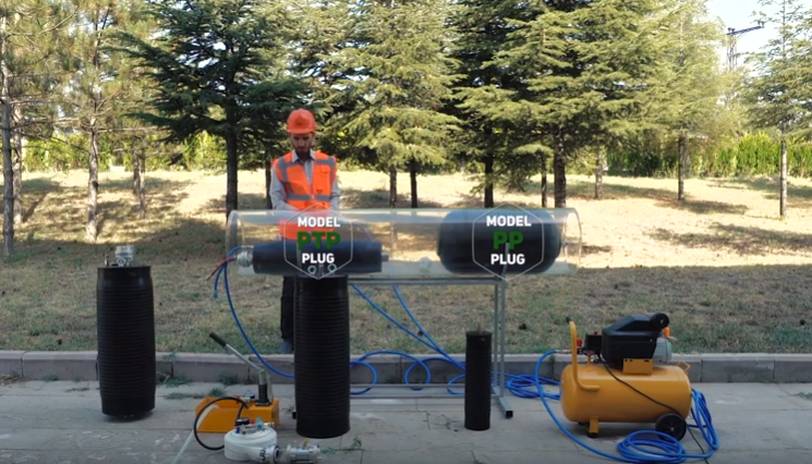How to implement Pipe Testing Plugs is explained for end users! Make application easier and shorter with these hints by PlugCo!
PlugCo Pipe Testing Plugs
Application of pipe testing plugs consists of a few steps. Here are some hints for your testing process for sewer lines.
PlugCo PTP Model and PlugCo PP Model are the types of the pipe plugs for this particular testing process. Be sure to select the size of the pipe plugs as per the pipe diameter.
How to implement
Place the suitable plug in the pipe, start to inflate and centralize the plug as shown in the manual and/or below video.
You will need pressure gauge, air hose, water hose, float and air discharge adaptor as well.
As the next step, check the air discharge point. Once you receive the continuous water flow at the air discharge point, connect the pressure gauge.
Place the second pipe plug into the line, start to inflate and centralize the plug. Then fill the test area with water. The compressed air in the testing area should be discharged through the float.
Once you receive the continuous water flow, connect the pressure gauge and the manual pressure water test pump. Then pressurize the test area.
Check whether the gauge indicates the test pressure (0,5bar). When you reach the test pressure (0,5bar) wait for 30 minutes as per EN 1610 Standard.
Meanwhile, If there is no pressure drop, it means that there is no leakage and the test has been completed successfully.
Deflate and clean up the pipe testing plugs until your testing process.

Expertise in Pipe Plugs
PlugCo pipe testing plugs provide perfect sealing for the leak tests. If you duly follow up the maintenance rules, You can use pipe plugs several times. This saves cost and time for your sewer line projects.
Easy to use PlugCo pipe plugs are distributed all over the world. Check our web site for other products such as pipe repair packers, joint testers and purge welding plugs.